Introducing Equations to Kids
Equations are an important part of STEM {science, technology, engineering, and math}. Equations are used when working math problems {addition, subtraction, multiplication, division}. Sometimes we call them number sentences. Equations are also formulas in science, math, or engineering that help us relate variables together and show information with symbols. Introducing equations to kids is a part of STEM learning. Often times we do it without really thinking. This post shows a few simple ways to introduce math and science equations to kids. Amazon affiliate links are used in this post. I make a small commission off of the purchases you make. Thank you for supporting Inspiration Laboratories.

Math Equations
I like taking a hands-on approach to learning math {just like anything we do}. We have done several math activities that incorporate equations {or number sentences}. My son likes using manipulatives to practice math skills. He likes learning games.
Ways to Make Ten
Use craft sticks and clothespins to make equations to add to ten.
You’ll need:
- 12 clothespins
- 6 craft sticks
- marker
- Number clothespins 0-10.
- Make an additional clothespin with the number 5.
- Write ___ + ___ = 10 on each craft stick. {You can also just leave spaces for the blank lines.}
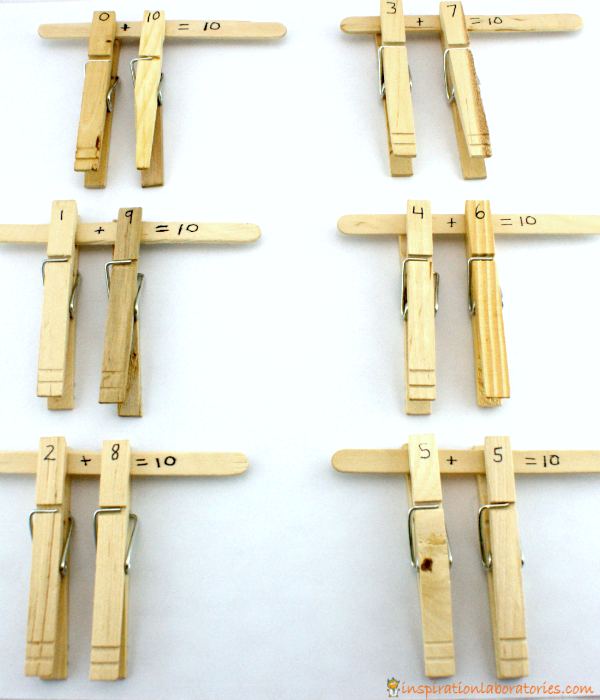
Ask your child to figure out all of the ways to make ten with two numbers. My son started by randomly selecting two clothespins. He placed them on the craft stick. Then we counted together to see if he was correct. For example, he chose the numbers 1 and 4. On one hand he held up the number 1 and on the other hand, he held up the number 4. He counted them and saw that they added up to 5. He continued choosing numbers until he found the number 6 added with 4 to make 10. Aiden liked choosing clothespins and discovering which pairs made 10.
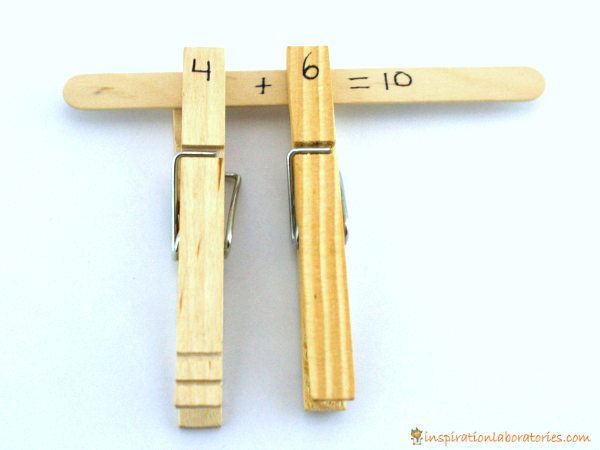
We also talked about how to get to 10, you had to use all of your fingers. If you had 5 fingers held up, how many other fingers did you need to make 5. He counted the 5 fingers on his other hand. 5!
More Math Equation Activities
Here are our past math activities that practice equations and addition or subtraction.
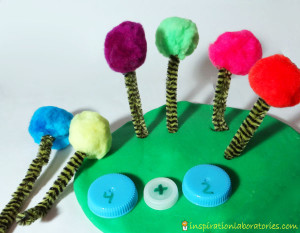 |
Truffula Tree Math Games – This was the first time I introduced Aiden to a math equation. We counted Truffula trees from Dr. Seuss’ The Lorax using milk caps as our playing pieces. |
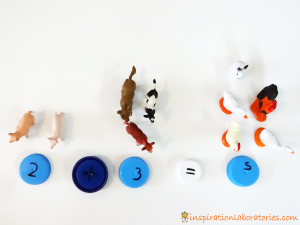 |
Barnyard Math Games – This game is similar to the Truffula tree math only this time we used the Safari Ltd Farm TOOB |
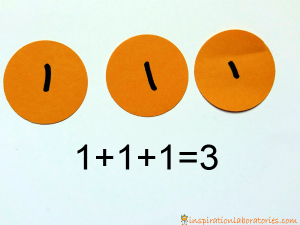 |
Super Hero Math Games: Catch a Villain – Stop villains from taking gold coins. Help the super hero add up the numbers on the gold coins. Write down an equation to visualize the addition. |
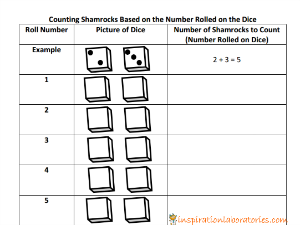 |
St. Patrick’s Day Math: Graphing Shamrocks – This post was intended to practice equations, but using equations are involved. Roll the dice and add up the numbers. You can write an equation, or number sentence to show the addition. Then, graph the data. |
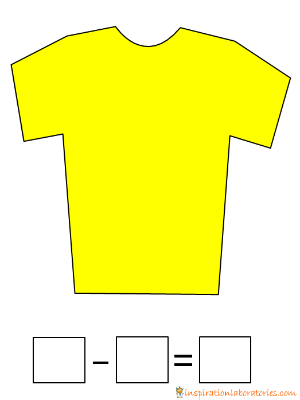 |
Pete the Cat Button Subtraction – Use buttons to practice subtraction with Pete the Cat’s yellow shirt. |
Science Equations
When I think of a place to start with introducing science equations, I think of the baking soda and vinegar reaction. It’s a familiar reaction to many. When you combine baking soda and vinegar, you get bubbles {carbon dioxide}, water, and a salt. The next time you mix together baking soda and vinegar, take the time to talk about the reactants and products of the reaction. Write down the chemical equation {use words for younger scientists and chemical formulas for older scientists}.
baking soda + vinegar = water + a salt {sodium acetate} + carbon dioxide
Baking soda and vinegar are the reactants. {They are the substances that are going to react/change.} The water, salt, and carbon dioxide are the products. {They are the end result of the reaction. They are what is made.} The salt is dissolved in the water, so the only visible products are the water and the carbon dioxide {the bubbles}.
If you happen to be looking for ways to introduce science equations to older students, you might try this tip for manipulating equations I found at Science Matters that uses craft sticks. Using a craft stick can help students visualize the concepts represented by certain science equations {those with 3 variables} like density = mass/volume, force = mass*acceleration. Easily answer the question: If we increase an objects mass and hold the force constant, what will happen to the object’s acceleration?
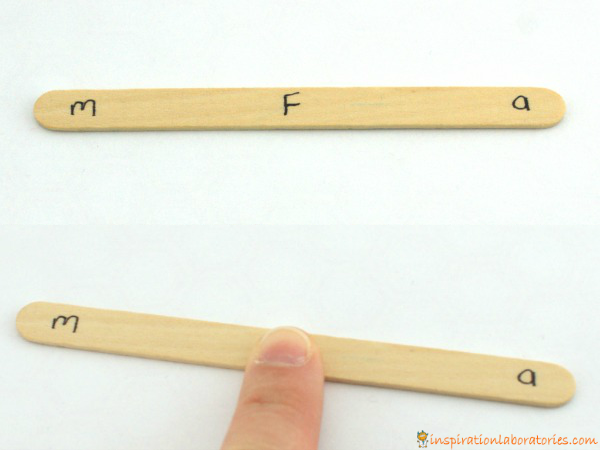
Move the mass side of the craft stick up and you’ll see the acceleration side goes down. If we increase an object’s mass {while holding the force constant}, the object’s acceleration will decrease. Read the full explanation in the manipulating equations post at Science Matters.
More STEM Ideas
This post is part of the A-Z STEM Activity Series organized by Little Bins for Little Hands. STEM stands for Science, Technology, Engineering, and Math. The posts in this series focus on one or more of these topic. Be sure to check out all of the posts for STEM ideas throughout the month of January.
If you liked this post, you’ll want to check out our 20 Preschool Physics Experiments and Activities.
![]()


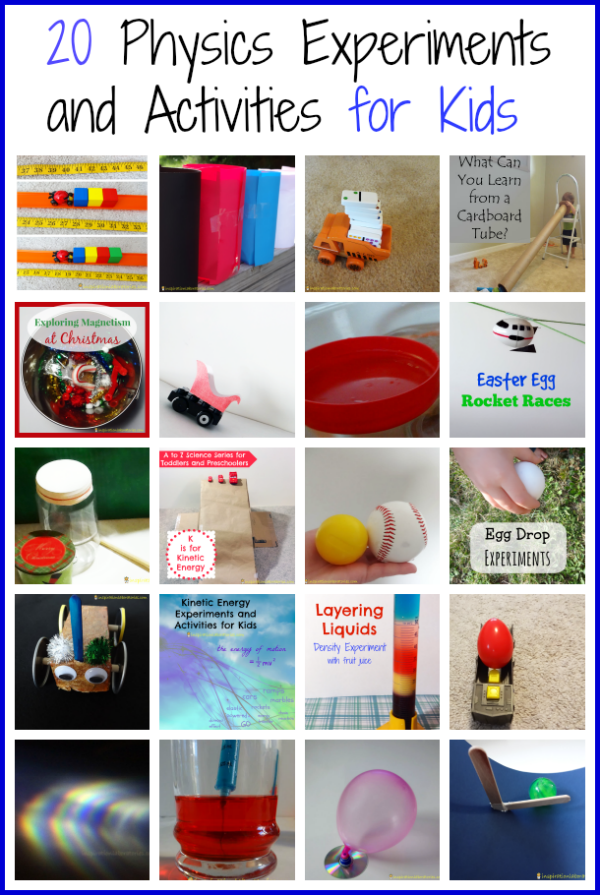
Leave a Reply